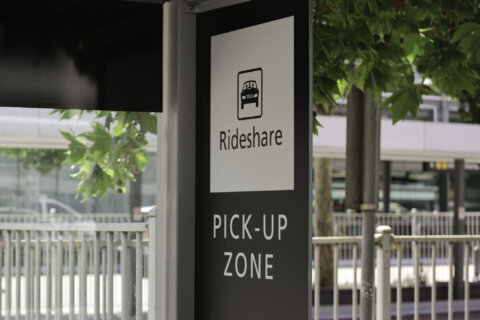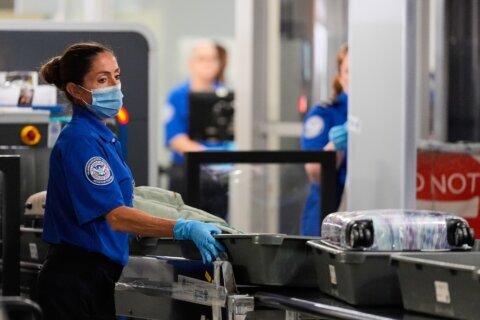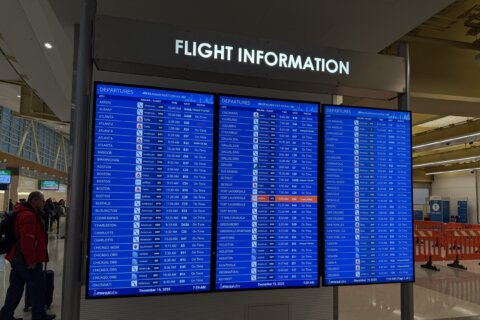Airfare prediction app Hopper made headlines after forecasting that domestic flight tickets would dip by 12 percent from 2015 and fall to the lowest seasonal rates since 2009. For frugal fliers, there’s an added bonus: Hopper’s six-month price prediction shows average domestic round-trip airfare dipping to $207 in September and $206 in October. Prices aren’t just declining for domestic trips: The Bureau of Labor Statistics found international flight fares declined by 15 percent in 2015.
Why the sudden price drop? Increasing industry consolidation, falling oil prices and a slew of extra fees for add-ons — for everything from seat assignments to priority boarding access to checked baggage — have enabled lower flight prices for consumers and airline revenue to skyrocket. In fact, the four biggest U.S. airlines (Delta, American, United and Southwest) collectively earned $3.9 billion in profits in the second quarter of 2016. And with growing competition from low-cost carriers such as Frontier Airlines and Spirit Airlines spurring major airlines to offer discounted rates, it’s no wonder why fares are reaching seven-year lows. Still, with cramped seating and less legroom on new planes, and airlines offering less award travel availability to frequent jet-setters, travelers are starting to question whether they’re really getting a bargain.
[See: 10 Outrageous Fees Every Traveler Should Know About.]
While lower flight prices are great for your wallet, a flurry of questions surround the trend: Will rates climb again in the near future? Will a la carte pricing continue? And will the in-flight experience change for the better or worse? To break down the benefits and downsides of sky-high airline profits for travelers, U.S. News got the inside scoop from industry experts and analysts.
How Extra Fees and Other Factors Affect Airfare
It’s important to think about airfare trends from a historical perspective, says Jason Clampet, co-founder and head of content at Skift, a travel research company. “Even if we think of all the fees that are added on, it’s still historically cheap to fly,” he says.
As Jay Sorensen, president of travel industry firm IdeaWorks, puts it: “I think consumers are getting a very good deal. And so are airlines.” When you look at the price of airfare over time, it’s a good value to the consumer. Unlike the years of economic strife for airlines in the wake of the terrorist attacks of Sept. 11, 2011, the industry’s profits continue to climb, enabling investment in improved products and aircrafts.
And though ancillaries get a bad reputation, they create choice and prevent consumers from spending money on services they may have not wanted to begin with, Sorensen explains. “Prior to the arrival of a la carte pricing, every airline would feed everyone,” he explains, but the reality is, only a portion of fliers wanted in-flight cuisine. And while low-cost carrier Spirit gets flack for its extra add-ons, its “Bare Fare,” which excludes services such as onboard beverages, assigned seating and carry-on bags, incentivized major carriers to roll out a basic economy product. “Here you have an airline which some people like to vilify, and yet this airline is doing more for consumers to lower fares,” he explains.
“We now are seeing close to half of passengers saying, ‘I’d rather have the option of paying for airline services I want to use,'” explains Henry Harteveldt, a travel industry analyst for Atmosphere Research Group. Consumers have acclimated to the fee-driven environment and appreciate the ability to choose where to save money, he explains. “We, as travelers, have changed a lot over the past few years,” he says.
And though different airlines offer different revenue models, with budget carriers tacking on extra fees, it’s a good thing for consumers to have choices, explains Ilia Kostov, senior vice president and chief commercial officer at Amadeus North America, a travel technology company. A common theme among airlines is an unbundling of fares, but fliers are getting used to it and are becoming savvier about comparing different airline products, he adds.
Declining oil prices enabling jet fuel prices to drop by 22 percent in the past year have also helped the industry net a rich profit and keep ticket prices low.
[See: 10 Common Pieces of Travel Advice You Should Never Follow.]
Why Increasing Consolidation Benefits Fliers
In spite of growing consolidation, there’s high competition for consumers. Case in point: the rising number of routes from budget carriers such as Allegiant Air, Frontier Airlines and Spirit Airlines, Harteveldt says. And because airlines can afford to be more generous with their flight fares, “it’s been a very active summer in terms of promotional airfare prices,” he explains.
And though there have been many mergers in the last decade, carriers are “not behaving in a monopolistic manner,” Sorensen says. “Airlines have given up some of that margin in the form of lower fares,” he adds, noting that they’ve struck a balance that’s working for the industry and consumers. And as major carriers have merged, low-cost airlines, including JetBlue, Spirit and Southwest have expanded, offering a variety of domestic options for consumers, Kostov says.
Historically, there’s been little benefit to travelers when airlines enter into price wars, Clampet says. While it’s great for travelers in the short term, it can be really dangerous as airlines artificially deflate their product, and raise prices, prompting flier frustration.
[See: 8 Airports With Amenities That Will make You Look Forward to Flying.]
The Flight Experience is Up in the Air
There is a “direct correlation between price and quality,” Clampet says. The best way to have less crowded airlines and fewer security lines is for prices to increase, he explains. Alternatively, lower fares and planes at 97 percent to 98 percent capacity translate to tightly packed terminals and challenges with TSA agent cutbacks, he adds.
Still, though the airport experience stands to be improved, there is a silver lining: Soaring profits translate to additional resources dedicated to in-flight enhancements. Aside from investing in infrastructure, airlines are also raising overall cuisine quality. “I think the switch from giving free food to charging for it has improved the quality of what is on board,” Sorensen says. Under the old system, everyone ate for free he explains, causing quality to be compromised to scale back costs. Now, you can pre-order more expensive, higher caliber meals in advance on longer flights, he says.
And because airlines have had to compete based on their product or service, they have “invested a lot in in-flight entertainment,” Harteveldt says. They’ve installed in-seat power outlets and USB outlets, and put an emphasis on improving in-flight Wi-Fi connectivity, he adds. Reliability is another area where airlines are committing time and attention, Harteveldt adds, noting that airlines are focused on improving maintenance, facilitating better connections and developing technology to prevent lost baggage.
“It’s hard to predict where long-term oil prices are going to be,” Kostov says, but with increasing in-flight options and carrier competition, fliers will certainly have more choices for what’s best for them.
More from U.S. News
Airline Partnerships That Are Changing the Way You Travel
When it’s Worthwhile to Splurge on Airfare
How to Prepare for Longer TSA Lines This Summer
Airfares Are at a 7-Year Low, but Are You Getting a Deal? originally appeared on usnews.com







